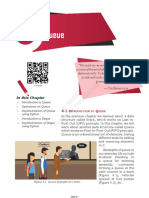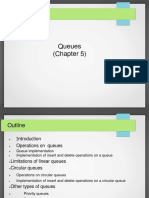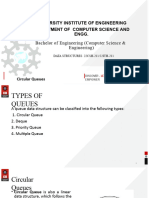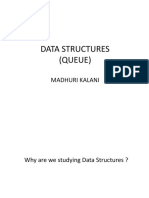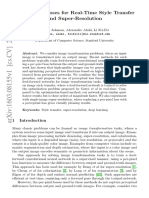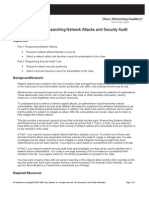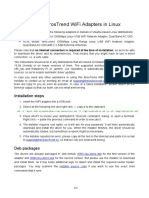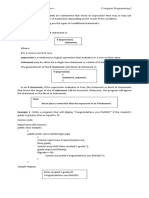0% found this document useful (0 votes)
176 views7 pages4 Queue Notes
Chapter 4 discusses the concept of Queue, an ordered linear list that follows the First In First Out (FIFO) principle, with applications in both real life and computer science. It covers operations such as ENQUEUE, DEQUEUE, and checks for empty or full states, along with Python implementations for these operations. The chapter also introduces Deque, a double-ended queue allowing insertion and deletion from both ends, and provides algorithms for its operations.
Uploaded by
roopasr2184Copyright
© © All Rights Reserved
We take content rights seriously. If you suspect this is your content, claim it here.
Available Formats
Download as PDF, TXT or read online on Scribd
0% found this document useful (0 votes)
176 views7 pages4 Queue Notes
Chapter 4 discusses the concept of Queue, an ordered linear list that follows the First In First Out (FIFO) principle, with applications in both real life and computer science. It covers operations such as ENQUEUE, DEQUEUE, and checks for empty or full states, along with Python implementations for these operations. The chapter also introduces Deque, a double-ended queue allowing insertion and deletion from both ends, and provides algorithms for its operations.
Uploaded by
roopasr2184Copyright
© © All Rights Reserved
We take content rights seriously. If you suspect this is your content, claim it here.
Available Formats
Download as PDF, TXT or read online on Scribd
/ 7




